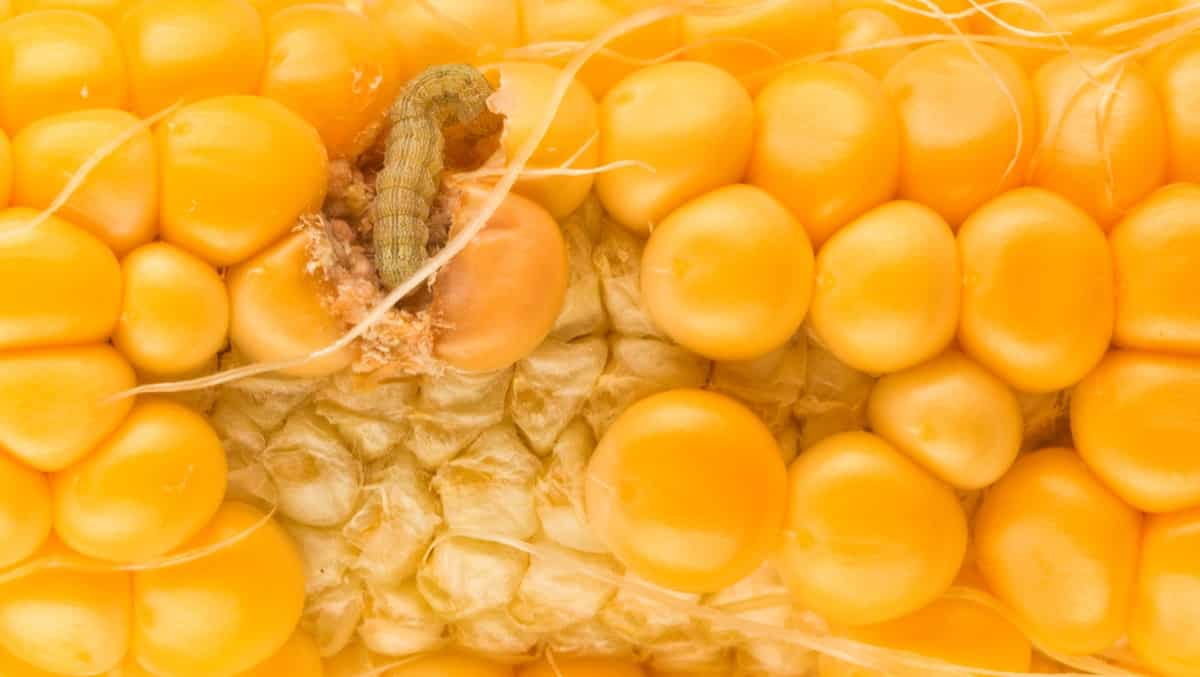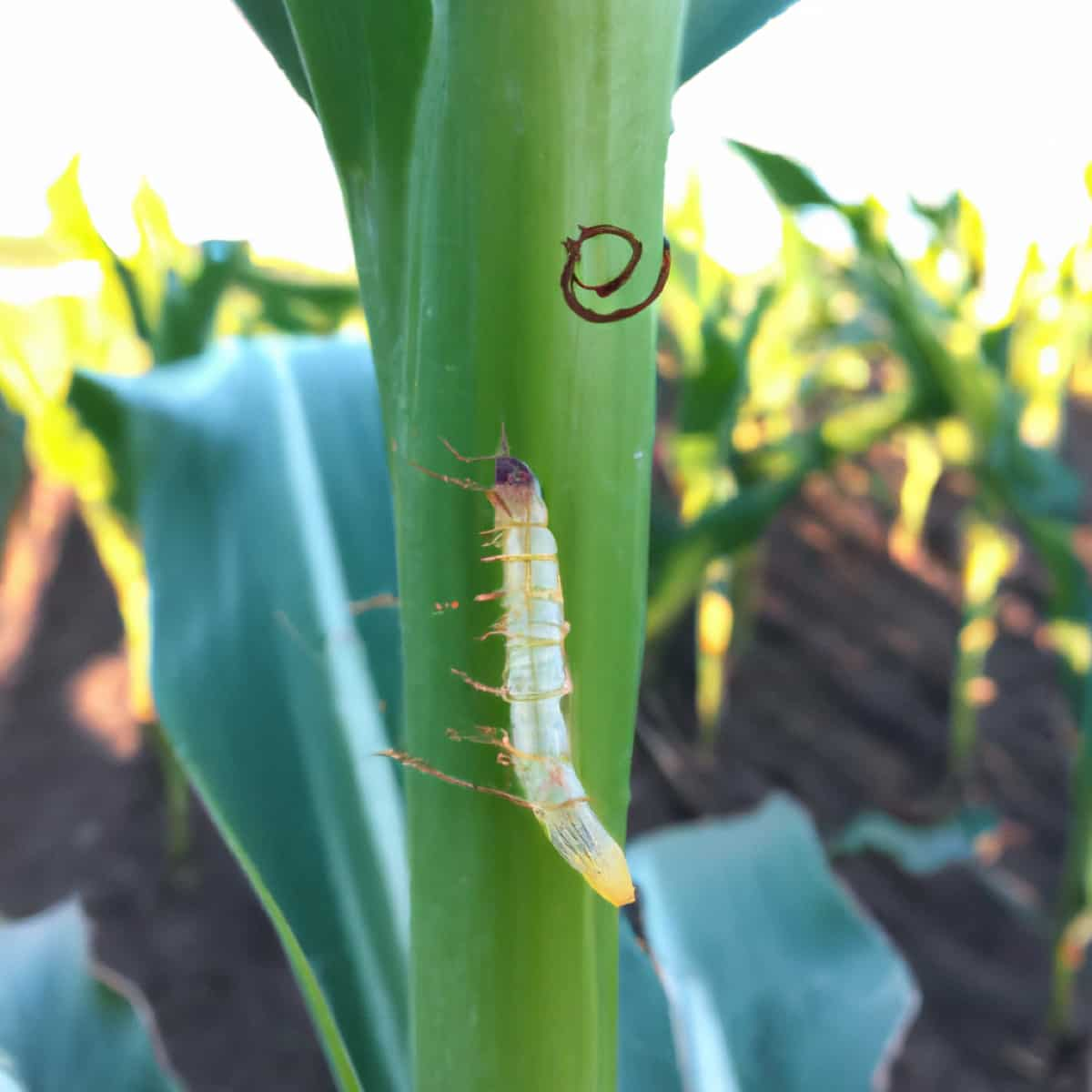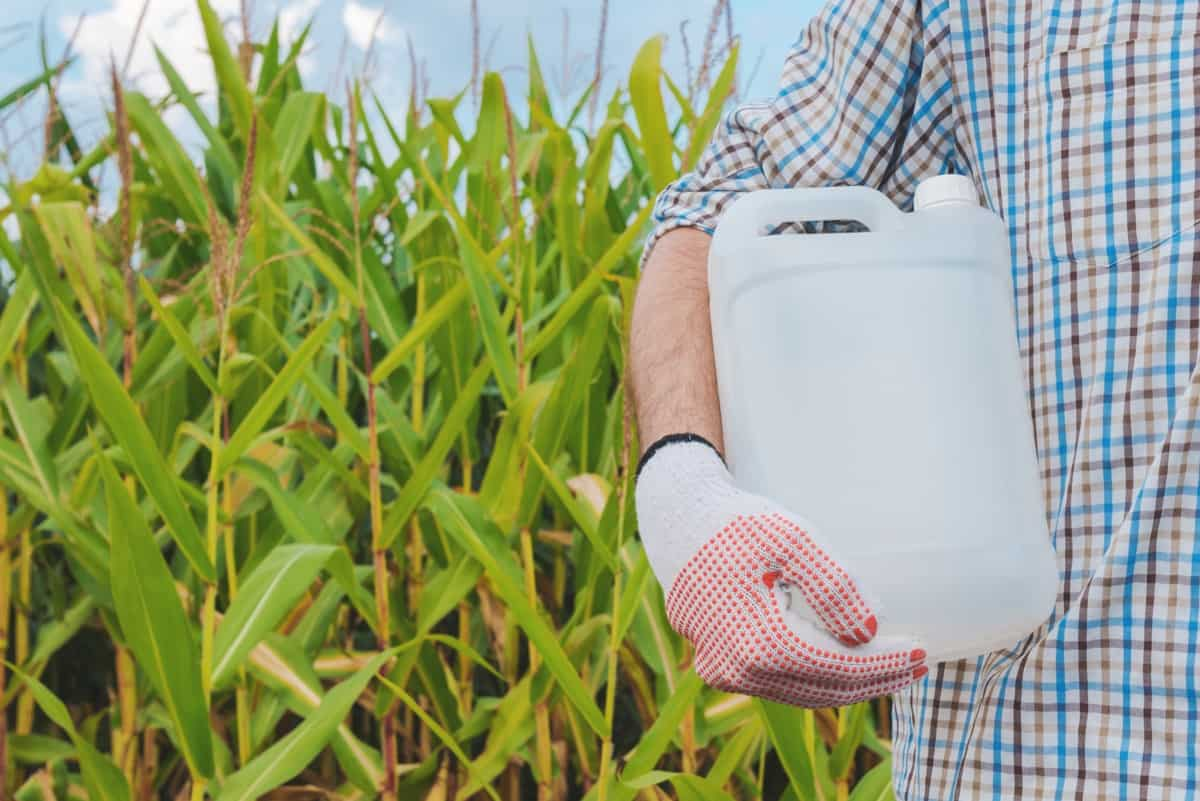Corn earworm is a significant threat to sweet corn production. It can damage the market product by feeding directly on it. It isn’t easy to control and is commonly found in high numbers at the end of the season. Pyrethroids are the primary insecticides used for corn earworm control. Still, there is growing concern that some populations have developed resistance.

Effective control programs are necessary to minimize damage, especially on late-season corn. Corn earworms are variable in color and hairy larvae ranging from yellow to green to red to brownish black. They may be found feeding in the ear tips after silking and are cannibalistic, with rarely more than one per ear or whorl.
Corn Earworm Management in Maize
The life cycle of Corn Earworm
The corn earworm is a species of moth (Helicoverpa zea) that lays its eggs singly on leaf hairs and corn silk. The eggs are pale green at first and hatch in 3-4 days. The larvae are variable in color, with a rough texture due to micro spines, and feed on the plant’s reproductive structure.
They grow through 6 instars and develop in around 31-13 days, depending on temperature. When mature, they drop to the ground, pupate in a chamber 5-10 cm below the surface, and emerge as yellowish-brown moths with a small dark spot on their forewings. The hind wings are creamy white, and black. The moths are active at night and can live for 5-15 days, with females able to lay 500-3000 eggs in that time.
Identification of Corn Earworm in Maize Field
- Corn earworm moths are buff-colored and about the same size as other moths in the cutworm family.
- Female moths lay eggs on green silks of sweet corn, which can hatch in a few days. The larvae then move into the ear and feed on green silk, later tunneling into maturing kernels.
- Corn earworm caterpillars are cannibalistic, and only one caterpillar is usually found in a single corn ear.
- After hatching, they take two to three weeks to become full-grown, causing increasing damage as they grow.
- After feeding, they drop into the soil, dig a cell, and pupate.
Damage Symptoms of Corn Earworm in Maize Field
- The maize earworm feeds on the fruiting stage and the host plant’s foliage.
- The larvae feed on the silk hairs and then bore into the ear to eat the kernels. This results in a track of damaged kernels and a long line of brown frass.
- Due to their cannibalistic behavior, only one earworm is usually present per cob. The damage to the cob and developing leaf blades creates numerous ragged holes, affecting pollination and grain filling and potentially reducing yield.
- Additionally, the damage can create a favorable environment for the growth of other diseases.
In case you missed it: Stem Borer Management in Maize: Symptoms, Treatment, Chemical, Biological, Natural, and Organic Control

Cultural Control of Corn Earworm
- Culturally controlled corn earworms can also be achieved by plowing fields, which kills many overwintering pupae. However, due to its highly mobile and migratory nature, reinvasion from distant sources can be expected.
- Some sweet corn varieties with tight husks around the ear tip can offer slight resistance to corn earworms. However, the pest can still cause damage to these varieties.
- Transgenic varieties that express the Bt-toxin in the silk have been shown to suppress corn earworms. Still, these are currently only available in limited quantities.
- In addition to these cultural control methods, biological control effectively reduces corn earworm populations. Natural enemies such as parasitic wasps, birds, and predator insects can help keep earworm populations in check.
- In some cases, the release of the parasitic wasp Trichogramma can also provide control. However, more than these methods may be required. They must be combined with other management strategies, such as insecticide applications and trap cropping.
- Growers can also monitor moth populations and predict earworm infestations using pheromone traps and degree-day models.
- Timing of insecticide applications should be based on the monitoring results to achieve maximum effectiveness while reducing the risk of insecticide resistance development.
Biological Control of Corn Earworm
- Biological control can be an effective way of controlling corn earworm populations, but the effectiveness varies depending on the conditions and the presence of other factors that may disrupt the balance of natural enemies.
- Some natural predators of corn earworms include minute pirate bugs, lady beetles, and green lacewing larvae. Fungal diseases can also impact corn earworm populations, but their impact is not consistent enough to suppress populations below damaging levels.
- Using insecticides in sweet corn crops can also reduce the populations of natural enemies, making biological control less effective.
Chemical Control of Corn Earworm
- Chemical control is used as a last resort for corn earworm infestations when other measures, such as trap cropping, varietal selection, and biological control, have been ineffective.
- In sweet corn, insecticides containing pyrethroid, spinetoram, esfenvalerate, or chlorpyrifos can target eggs and newly hatched larvae before they enter the ear tip.
- It is important to follow the recommended guidelines and schedules for application and rotate insecticides with different modes of action to reduce the risk of resistance.
- Additionally, chemical control should be combined with preventive measures and biological control to create an integrated approach.
In case you missed it: Pink Stem Borer Management in Maize: Symptoms, Treatment, Chemical, Biological, Natural, and Organic Control

Organic/natural control of Corn Earworm
Organic/natural controls for corn earworms include planting late-season varieties that are less attractive to the moths, using floating row covers to protect the silks from being exposed to the moths, and maintaining healthy and diverse crop rotation to enhance the presence of beneficial insects that can help to control the population.
Cultural practices, such as tillage and proper irrigation, can play a role in reducing the impact of corn earworm. It’s important to note that organic and natural controls may require more frequent monitoring and earlier interventions to control corn earworm populations effectively.
Preventive measures for control of Corn Earworm
- Plant-resistant or tolerant plants early in the season to avoid peak moth populations.
- Keep an eye out for demoths and mass-catch them with light or pheromone traps.
- To conserve beneficial insect populations, keep insecticide use to a minimum.
- Companion cropping with plants that attract moths may be effective.
- Control weeds in and around the field. Till the soil between seasons to expose the pupae to the elements.
Conclusion
In conclusion, the control of corn earworms can be achieved through a combination of cultural, biological, chemical, and organic/natural methods. It is important to begin the control measures as soon as the first silks appear in the field and maintain proper ear tip coverage.
Incorporating a mix of different control methods, rotating insecticides, and considering environmental factors can improve the efficacy of the control measures and reduce the risk of resistance development. It is also important to follow recommended spray schedules and to use insecticides with proven efficacy against corn earworms.
- Deworming Schedule for Dogs/Puppies: A Beginners Guide
- How to Prevent and Control Parasites in Goats
- Beneficial Insects in Pest Management
- Natural Solutions for Pest Control in Flower Gardens
- Types of Fungicides Used in Agriculture
- Common Issues in the Fruit Development Stage of Pomegranate Farming
- Fruit Development Issues in Papaya: Easy Solutions and Treatment
- Soil-Borne Diseases and How to Protect Your Plants
- Practices to Prevent Disease Spread in the Garden